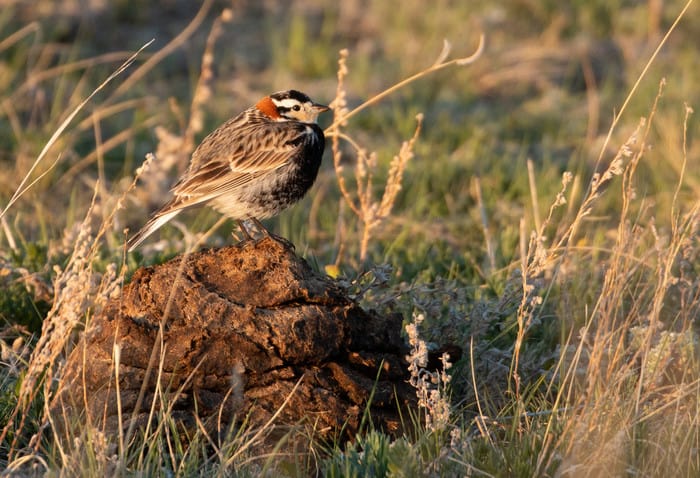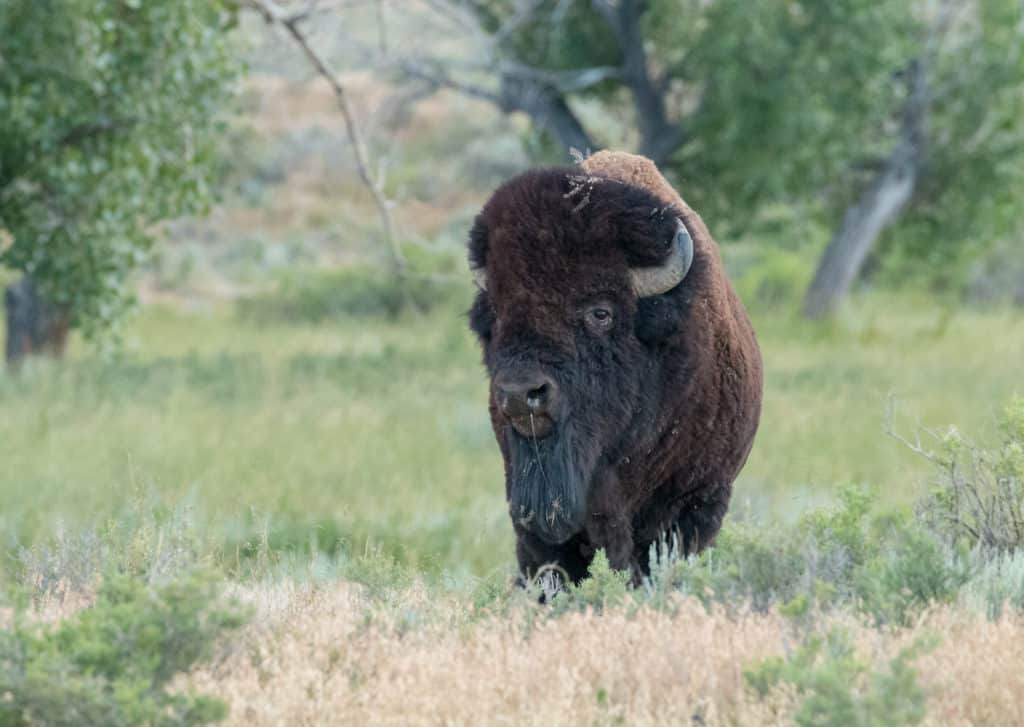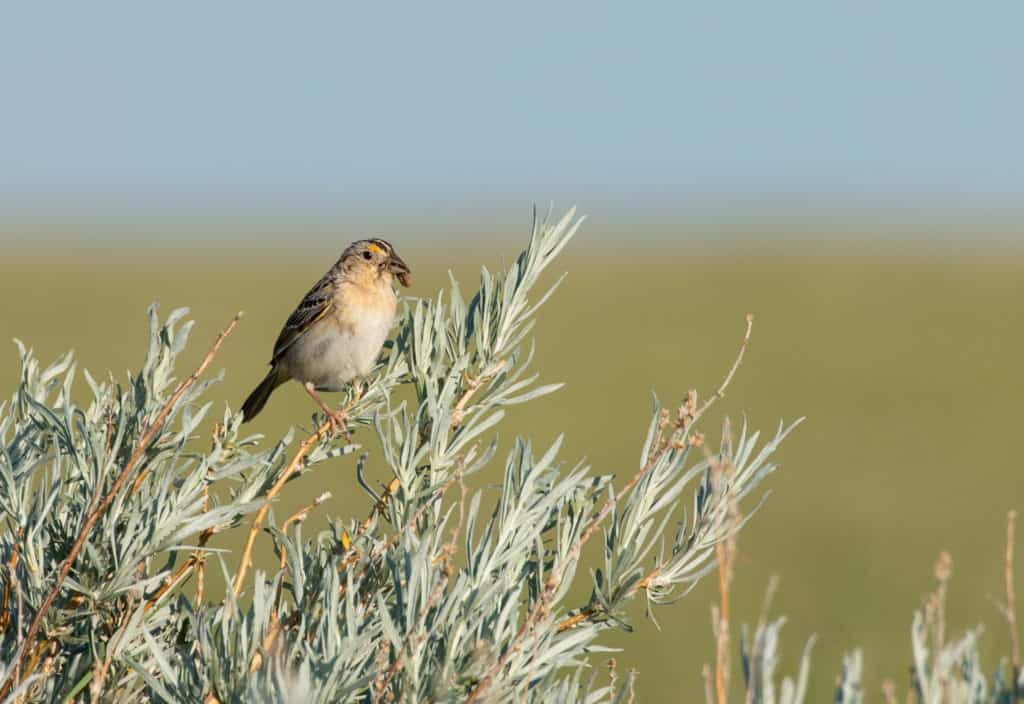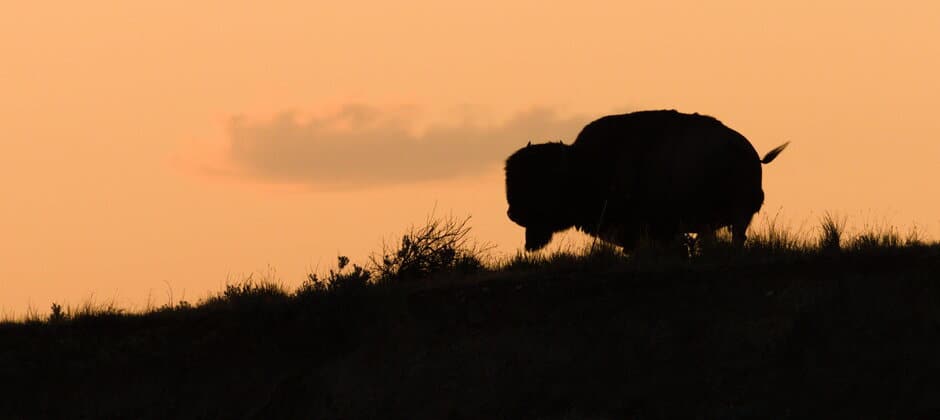Share this article
Bison grazing doesn’t impact grassland bird diversity
Well-managed cattle grazing plots have similar grassland bird diversity as prairies where bison roam in Montana.
This new finding suggests fears may be overblown that bison might overgraze land in Montana when they’re fenced into large ranges.
“In our part of the world, bison reintroduction is pretty controversial,” said Andy Boyce, an ecologist at the Smithsonian Migratory Bird Center. “One of the main concerns by ranching groups is that putting bison on the land for 12 months out of the year without any fences is going to harm the landscape.”
Wildlife managers have long known that overgrazing by domestic cattle, if not managed, can lead to decreased grassland bird diversity. Many birds like greater sage-grouse (Centrocercus urophasianus) and the chestnut-collared longspur (Calcarius ornatus) are in decline due to habitat loss and overgrazing.

The chestnut-collared longspur is in decline due in part to overgrazing. Credit: Andy J. Boyce/Smithsonian
But can bison have similar negative effects on avian species? Bird conservationists are among those that have raised that concern as well as ranchers and others who oppose bison (Bison bison) reintroduction on the land due to concerns about the transmission of diseases like brucellosis to cattle.
Boyce and his co-authors set out to see if bison impact grassland bird diversity in the Montana plains. They worked with the Fort Belknap Indian Reservation and the American Prairie Reserve—an organization working to create “the largest nature reserve in the contiguous United States”—to answer this question. They divided up areas grazed by cattle and others by bison, and conducted bird and vegetation surveys on the plains. They also analyzed soil and topography of the areas.
In a study Boyce led, published recently in Avian Conservation and Ecology, the researchers found the areas where bison grazed had higher densities of vesper sparrows (Pooecetes gramineus) and grasshopper sparrows (Ammodramus savannarum). But overall, similar species appeared in areas where either cattle or bison grazed.
“The overarching result was that we found very similar bird community diversity and abundances,” Boyce said.

Bird diversity was slightly better for some species in areas where bison grazed. Credit: Andy J. Boyce
Aside from having slightly higher abundance of some species, the bison areas are likely to be better for wildlife in general, Boyce said. This is due in part to the bison areas having less fencing to control their grazing, while ranchers typically rotate cattle between several different fenced areas. Sage-grouse are sometimes killed or injured when flying into barbwire fences that keep cattle in, while the barriers also present challenges to the movement of mammals like pronghorn (Antilocapra americana).
“The bison are basically in one giant pasture with a perimeter fence but with no internal fences,” Boyce said. “The fact that there was a huge reduction in fence infrastructure helps.”
Bison likely don’t overgraze because they are more mobile. The animals are also more drought resistant, allowing them to wander farther from water sources. Cattle, on the other hand, typically stay near water sources, overgrazing the land around them unless they are rotated by ranchers.
“Bison move around searching for ideal resources,” Boyce said.

A grasshopper sparrow. Credit: Andy J. Boyce
But the fact that even cattle-grazed areas provide good habitat for grassland birds, if managed well and not overgrazed, is also important, he said. “Grazers are important to grassland ecosystems. We can provide good habitat for grassland birds as long as we manage them properly,” Boyce said.
He added that the discovery is important since more and more national parks, Indigenous groups and conservation organizations are reintroducing bison to land in the U.S. and Canada.
“We’re not seeing any evidence of degradation,” Boyce said.
Header Image: Conservationists were concerned bison might overgraze grasslands. Credit: Andy J. Boyce








